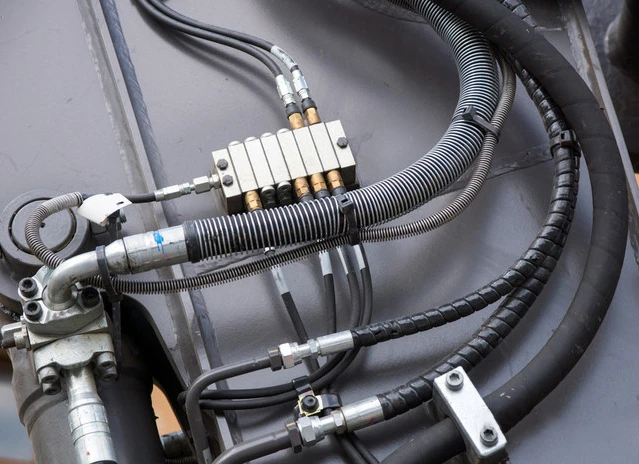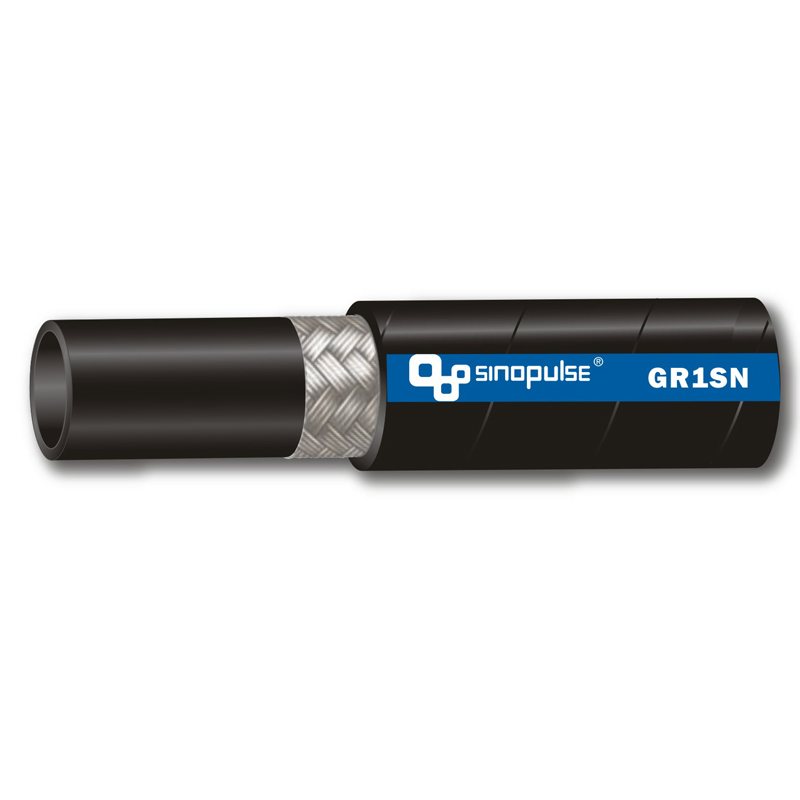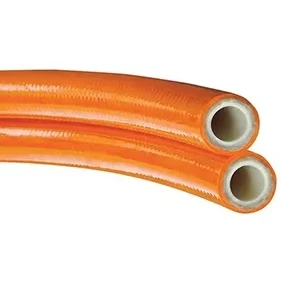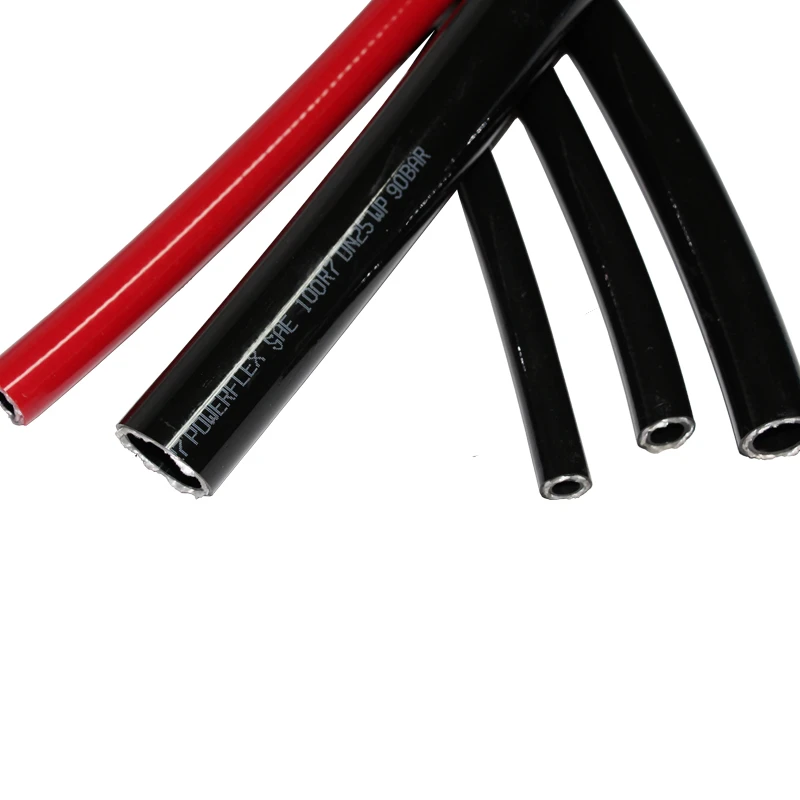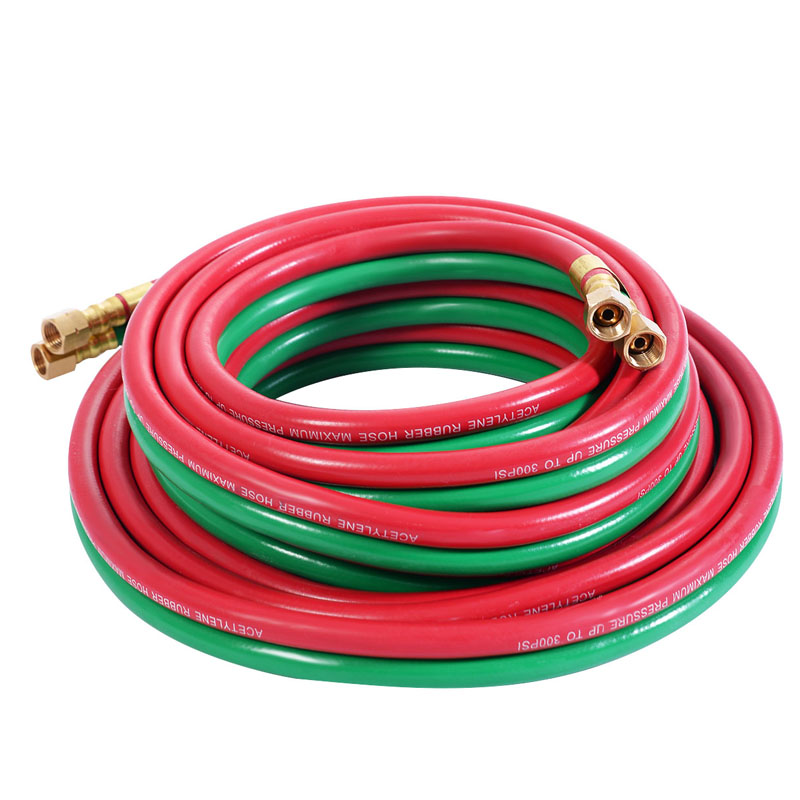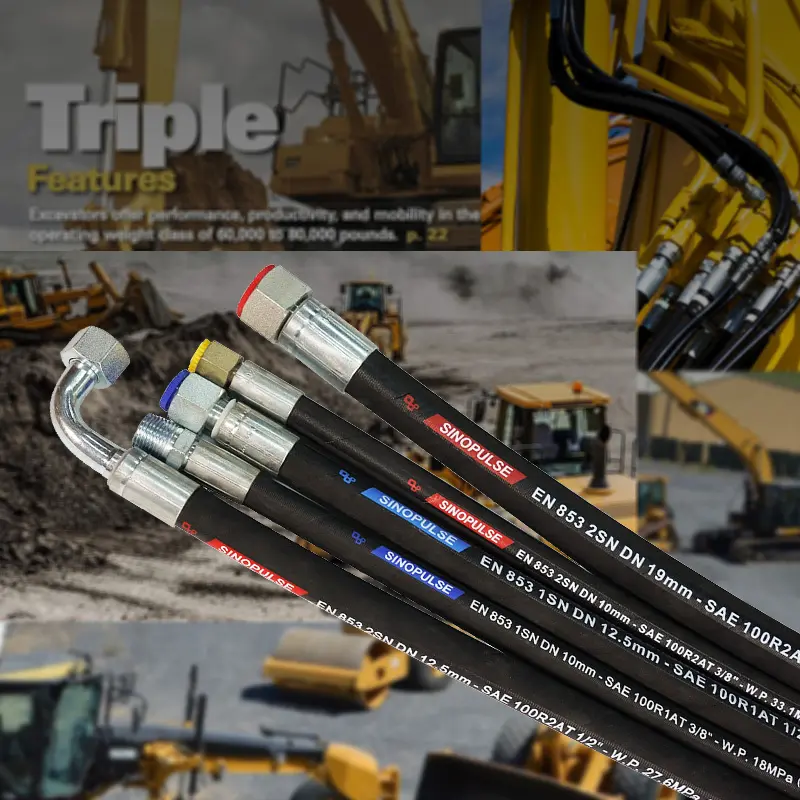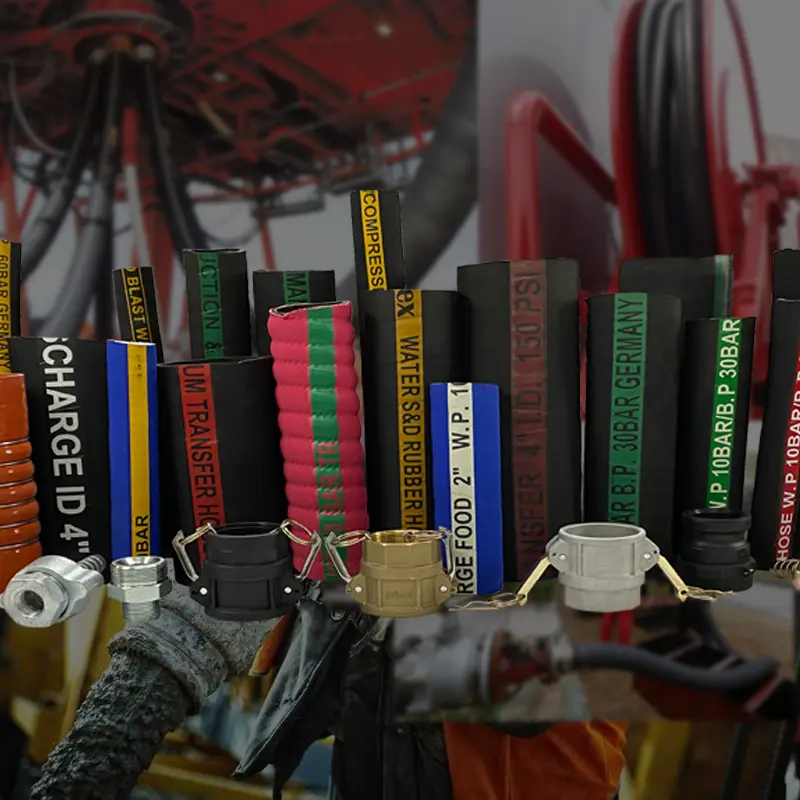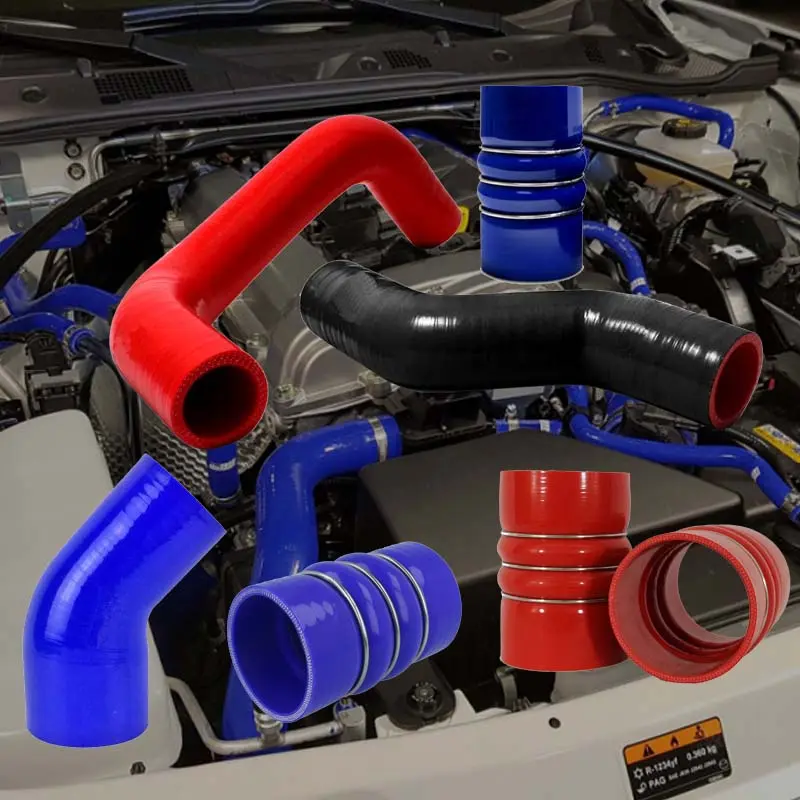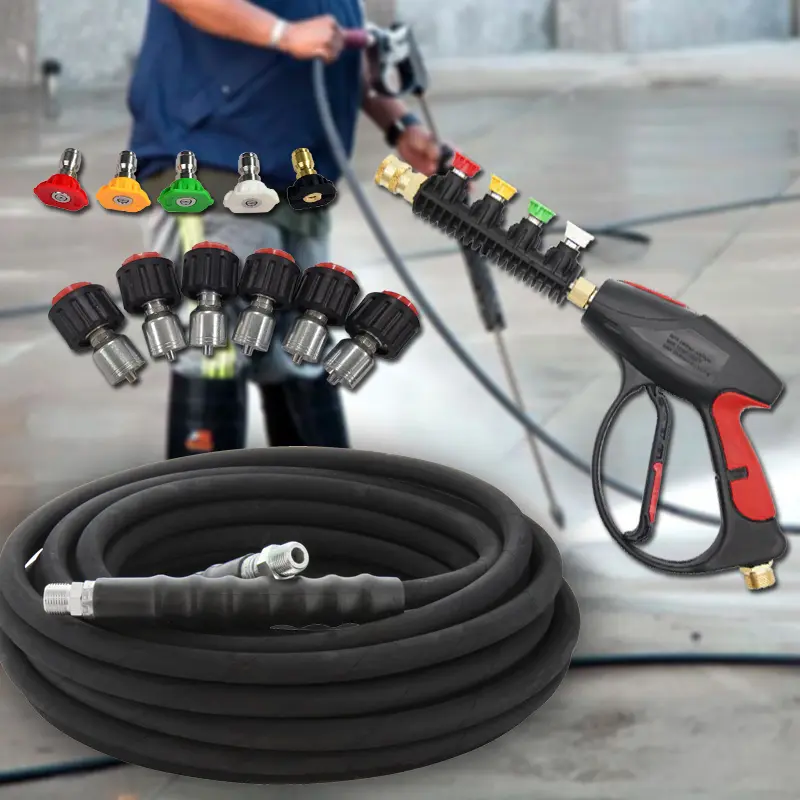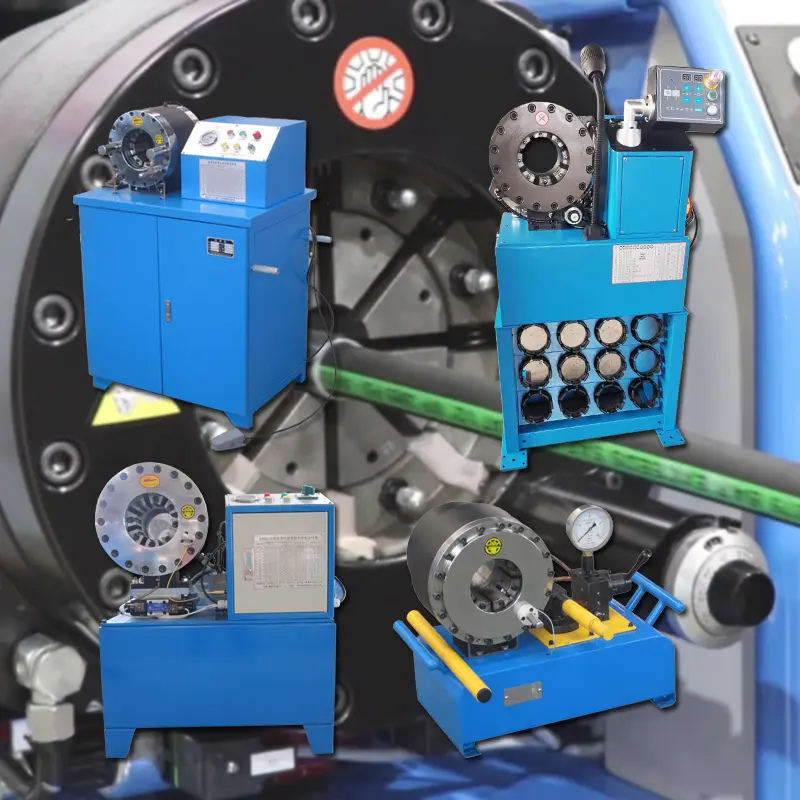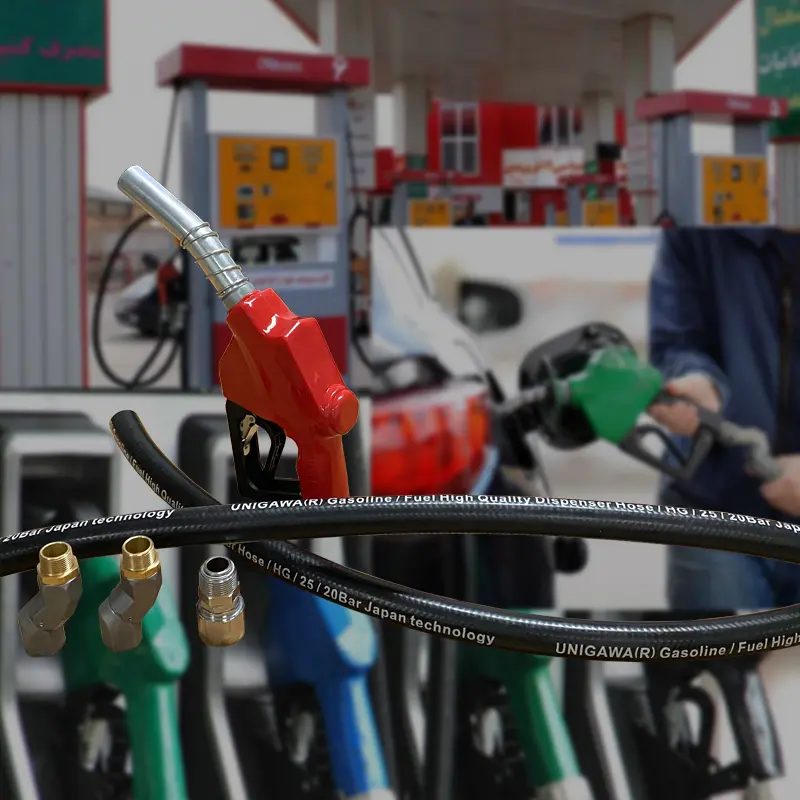A hydraulic hose explosion is more than a mechanical failure—it’s a disruption that risks safety, halts operations, and incurs costly repairs. As a trusted hydraulic hose manufacturer, SINOPULSE recognizes that understanding the root causes of such failures is the first step toward prevention. Drawing on industry insights and engineering expertise, this guide dissects the key factors behind hydraulic hose explosions, from material fatigue to improper use, and highlights how our solutions mitigate these risks.
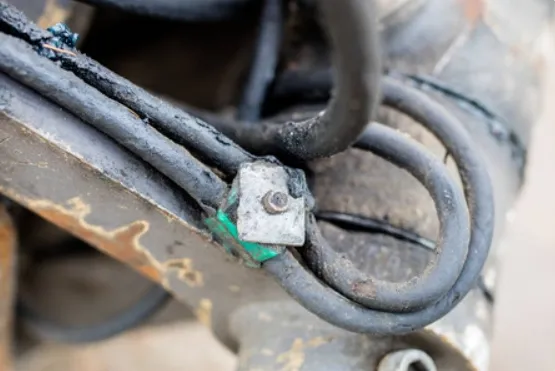
1. Compromised Hose Quality: The Foundation of Failure
At the core of many explosions lies subpar hose quality. Inferior materials, shoddy craftsmanship, and non-compliant manufacturing processes create ticking time bombs in hydraulic systems:
- Weak Reinforcements: Low-grade steel wire or textile braids—common in cheap alternatives—lack the tensile strength to withstand pressure spikes, leading to sudden bursts.
- Poor Seals: Shoddy crimping at fittings allows fluid leakage, which escalates into pressure imbalances and eventual explosion.
- Inferior Elastomers: Inner tubes made from low-quality rubber degrade quickly when exposed to hydraulic fluids, losing integrity and causing system failures.
SINOPULSE’s hydraulic hose for sale adheres to SAE, DIN, and ISO standards, with each hose undergoing rigorous pressure testing (1.5x working pressure) and material validation. Our commitment to hose quality ensures reinforcements, seals, and elastomers meet the highest benchmarks.
2. Overpressure of Hydraulic Hose: When Systems Exceed Limits
High-pressure hydraulic hose is engineered to handle specific pressure thresholds, but exceeding these limits is a leading cause of explosions:
- System Malfunctions: Faulty relief valves or pumps can send pressure surging beyond the hose’s rated capacity—for example, a 3,000 PSI hose subjected to 5,000 PSI will fail catastrophically.
- Mismatched Components: Using a low-pressure hose in a high-intensity application (e.g., textile-reinforced hoses in construction machinery) is a recipe for disaster.
Our custom hydraulic hoses are designed with safety margins: a 4,000 PSI rated hose, for instance, is tested to 6,000 PSI to account for transient spikes. We collaborate with clients to match hose pressure ratings to system demands, eliminating overpressure risks.
3. Installation Errors of Hydraulic Hose: The Hidden Saboteurs
Even premium hoses fall victim to improper installation, which introduces stress points and weakens structural integrity:
- Sharp Bends: Bending a hose beyond its minimum radius (e.g., a 10mm OD hose forced into a 50mm bend) crushes reinforcement layers, creating fatigue zones.
- Over-Tightening Fittings: Excessive torque distorts the hose’s end connections, leading to leaks that compromise pressure balance.
- Abrasive Contact: Routing hoses against sharp metal edges or moving parts wears down outer covers, exposing reinforcements to damage.
SINOPULSE provides detailed installation guides for every product, emphasizing proper bending, fitting torque, and routing. Our flexible hydraulic hose designs, with optimized bend radii, reduce installation-induced stress.
4. Hydraulic Hose Fatigue: The Toll of Time and Motion
Hose fatigue—gradual degradation from repeated stress—often leads to explosions long after initial installation:
- Vibration Damage: Pulsating hydraulic fluids cause constant flexing, weakening steel braids over time. Unsecured hoses vibrate more intensely, accelerating fatigue.
- Thermal Cycling: Extreme temperature fluctuations (e.g., -40°C to +120°C) cause rubber to expand and contract, creating micro-cracks in inner tubes and reinforcements.
- Aging Materials: Even well-maintained hoses degrade after 3–5 years of heavy use, as elastomers harden and reinforcements lose tensile strength.
Our hoses feature fatigue-resistant materials: high-tensile steel wire in reinforcements and UV-stabilized outer covers to withstand thermal and environmental stress. Regular inspections, as recommended by our engineers, help detect hose fatigue before it turns critical.
5. Hydraulic Hose External Aggressors: Corrosion, Contamination, and Neglect
Hydraulic hoses operate in harsh environments, and external factors often contribute to explosions:
- Chemical Corrosion: Exposure to diesel, solvents, or fertilizers breaks down rubber compounds, making hoses brittle and prone to rupture.
- Fluid Contamination: Particulates in hydraulic oil (e.g., metal shavings) abrade inner tubes, creating weak spots that expand under pressure.
- Neglected Maintenance: Failing to replace worn hoses or ignoring leaks allows small issues to escalate into catastrophic failures.
SINOPULSE’s custom hydraulic hoses include chemical-resistant options (e.g., PTFE-lined models for aggressive fluids) and durable outer covers that repel abrasives. We also advocate for proactive maintenance schedules to address external threats early.
6. Exceeding Service Life of Hydraulic Hose: When Age Catches Up
All hoses have a lifespan, and operating beyond it is a risky gamble:
- Hidden Degradation: Even without visible wear, internal reinforcements weaken over time, reducing pressure-handling capabilities.
- Obsolete Standards: Older hoses may not meet modern safety benchmarks, lacking the design improvements of newer models.
We mark each hose with a manufacturing date and recommend replacement every 4–6 years, depending on usage. Our hydraulic hose for sale includes upgrade options that extend service life through advanced materials and design.
SINOPULSE Hydraulic Hose for Sale: Engineering Explosion-Proof Solutions
Understanding these causes is just the start—preventing hydraulic hose explosion requires expertise in design, material science, and application engineering. As a leading hydraulic hose manufacturer , we address each risk factor:
- Quality Assurance: From raw material selection to final testing, our processes prioritize durability and compliance.
- Customization: Custom hydraulic hosestailored to pressure, temperature, and chemical exposure eliminate mismatches.
- Support: We offer installation training and maintenance guidance to ensure proper use throughout the hose’s lifecycle.
Conclusion: Safety Starts with the Right Partner
A hydraulic hose explosion is preventable with the right knowledge, quality products, and attention to detail. SINOPULSE combines decades of engineering experience with a commitment to hose quality, delivering hoses that stand up to pressure, fatigue, and environmental challenges.
Explore our hydraulic hose for sale today, and trust in a partner who views every hose as a critical safety component—not just a commodity. With SINOPULSE, you’re not just buying a hose—you’re investing in explosion-proof reliability.
This is the last article
Product Application









